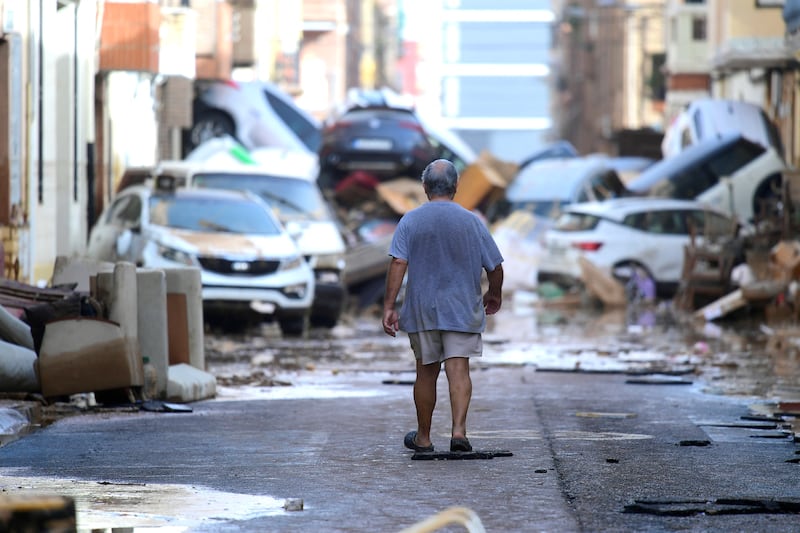The worst flash floods eastern Spain has seen in four decades have left more than 90 people dead, many others missing and left many areas in chaos.
Torrential rainfall began on Tuesday night and continued into Wednesday in the Valencia region on the Mediterranean coast, as well as parts of neighbouring Andalucía and Castilla-La Mancha. Streets were flooded as rivers burst their banks, bridges collapsed and cars, often with drivers inside them, were pushed along by the water.
By Wednesday night 95 deaths had been confirmed, almost all of them in Valencia, amid fears that the death toll would increase further.
“The whole of Spain cries with you,” the prime minister, Pedro Sánchez, said, addressing those affected. “We will make available all the resources necessary...so that we can recover from this tragedy. We won’t leave you alone.”
RM Block
[ Irish people in Valencia: 'It was like a disaster movie'Opens in new window ]
King Felipe also spoke about the disaster. “The queen and I wish to convey our condolences to all those who have lost loved ones and who, in some cases, still don’t know what has happened to their relatives.”
European Commission president Ursula von der Leyen pledged help through the Copernicus satellite system and the triggering of an EU civil protection mechanism.
The floods caught many people off guard and away from their homes. Many sought to escape the flood waters by climbing on to roofs, while others took refuge in vehicles.
The town of Paiporta, near the city of Valencia, was particularly badly hit. “At around 8.30pm the water started to come and there was a wave, like a tsunami,” Guillermo Serrano Pérez, who is from the town, told El País. “And we had to get on to one of the bridges that go over the motorway. The cars nearby were washed away.”
The town, of 27,000 inhabitants, reported at least 40 deaths caused by the flooding, six of them were residents in a care home for the elderly.
[ Flooding in Spain: in picturesOpens in new window ]
The small town of Letur, in the neighbouring region of Castilla-La Mancha, reported six people missing. The body of an 88-year-old woman was later found in her home.
Emergency services worked throughout the day to rescue people stranded on rooftops or in cars. They also searched through debris, in many cases with sniffer dogs, for survivors.
The damage caused became fully apparent as the flood waters subsided. In many towns cars were piled high on top of each other. Many roads were impossible to drive along, and rail links were severely disrupted. The fast-train route between Madrid and Valencia was suspended, and is expected to remain out of service for several days, as were many flights to Valencia airport.

Around 150,000 people had no electricity throughout the day, although service was restored to some of them by the evening. Mobile phone services were also disrupted in many areas.
There is often heavy rainfall at this time of year in eastern Spain and the authorities did issue weather alerts on Tuesday. However, this weather event was much worse than expected and the most devastating in this part of Spain since the 1980s. The role of the regional government in preparing the people of Valencia for this catastrophe, and whether it did enough, has started to come under scrutiny.
Heavy rainfall has been forecast for parts of southern and northeastern Spain on Thursday, and the authorities have issued alerts to residents in those areas.
[ Spain flash floods: Have you been affected? Tell us your storyOpens in new window ]
- Sign up for push alerts and have the best news, analysis and comment delivered directly to your phone
- Join The Irish Times on WhatsApp and stay up to date
- Listen to our Inside Politics podcast for the best political chat and analysis




















